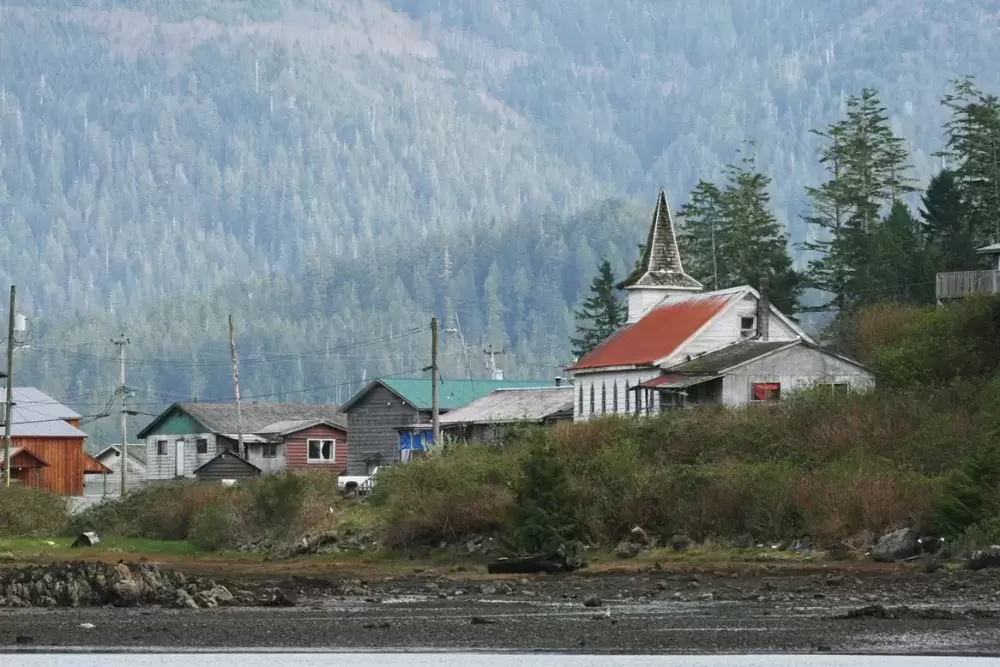A 7.7 magnitude earthquake that struck Haida Gwaii on the evening of Saturday, Oct. 27 has put the entire BC coast to the tsunami preparedness test.
News of the earthquake came quick through social media like Facebook and Twitter, but it took 43 minutes for BC’s Provincial Emergency Program (PEP) to issue a tsunami warning.
In the confusion over whether or not there was an official tsunami warning many coastal communities like Tofino and Ucluelet took the cautious approach, activating their tsunami warning systems and evacuating people to higher ground.
The tiny village of Hot Springs Cove is no stranger to the danger of tsunamis. The original village was located deep inside Refuge Cove; it was wiped out in 1964 after it was hit by a tsunami generated by the 9.2 Great Alaskan Earthquake.
Back then there were no early warning systems. The tsunami struck late at night, about 11:00, after the community generator was turned off. Those still awake were spending quiet evenings in their homes by the glow of oil lanterns. By the time anybody noticed anything was wrong, it was too late. Water had already surged into the cove causing boats to drift away and lifting houses off of their foundations.
Most were able to wait until the initial wave subsided before making their way to high ground while others were forced to swim in the frigid water.
One house was carried toward the mouth of the cove with three women trapped inside. They were rescued and taken aboard a canoe before the house burst into flames.
And so it is no wonder that people living in the Cove take seriously any tsunami warning, even though nearly 50 years have passed.
Hesquiaht’s Emergency Services Coordinator Bernard Charleson said he normally gets tsunami alerts from PEP, but on the night of Oct. 27 he was first made aware of the Haida Gwaii earthquake by a call from Port Alberni.
“It took 45 minutes for PEP to issue an alert and we had to warn people not only on the Springs side (the Hesquiaht village) but also the people on the co-op side,” said Charleson.
The village of Hot Springs Cove is now located on high ground, north west of the old village site; it faces Maquinna Provincial Park on the opposite side of the cove where the famous hot springs are located. The park sits on a small peninsula with a housing co-op community that sits back-to-back with the park.
Charleson said he rode out in his boat to warn the people there of the potential tsunami. He reported a small wave that eventually washed through the cove but everyone was safe in their homes.
While everyone was safe, Charleson said the event served to highlight what his community needs to do to improve their emergency preparedness. “There will be a community meeting tomorrow evening where we will talk about the gaps that need to be worked out,” said Charleson.
He said his community works with Ahousaht and is looking forward to a visit from Curtis Dick to share ideas about tsunami safety.
Over in Tla-o-qui-aht, Chief Moses Martin said he was en route home when word about the tsunami danger reached there. He said it sounded like things went well.
TFN has appointed two emergency preparedness coordinators; John Williams for Esowista and Tyhistanis located near Long Beach and Norman Thomas for Opitsaht, located on Meares Island.
According to Martin lower Esowista was evacuated within eight minutes. “Although Tyhistanis is above tsunami level people still wanted to go to higher levels,” said Martin.
Things went a little slower in Opitsaht, said Martin, due to the lack of emergency equipment. Opitsaht does not have an emergency alarm system like the ones on Long Beach so people were forced to run house-to-house to warn people.
“We are going to review the whole response to talk about what went well and what didn’t,” Martin said. Martin credits the men and women of TFN for assisting with emergency evacuation and coordination. TFN will also meet with the Alberni Clayoquot Regional District and leaders of the Village of Tofino to assess the situation.
In Ahousaht, Emergency Services Coordinator Curtis Dick was at the Thunderbird Hall taking part in a potlatch when a family member approached to tell him about the Haida Gwaii quake.
“I went home and called my contacts at PEP and they confirmed the news so we put our emergency plan into effect,” said Dick.
A siren was blasted throughout the village followed by a public message via VHF radio directing people to move to higher ground.
“Everything went good…but there’s always one or two not wanting to move, causing stress for the rest of the people,” said Dick.
“Our people do an awesome job at times like this,” said Dick. There are always volunteers running door-to-door to evacuate people, drivers and their vehicles transporting people and then there’s the people living uphill that take others in for as long as the warning is in effect.
In Kyuquot Agnes Oscar first heard of the danger from her grandson, who came to her house to warn her. She said there’s usually an announcement over the VHF radio. Tofino Coast Guard sends out alerts on VHF directing people to switch to Channel 16 – the emergency channel for further instruction.
People began moving to higher ground, up to the school. There, too, locals looked after one another, using trucks to bring elders and families up the steep hill.
Oscar says they stayed at the school until nearly 11 p.m.







